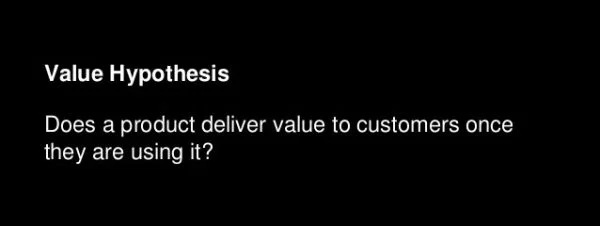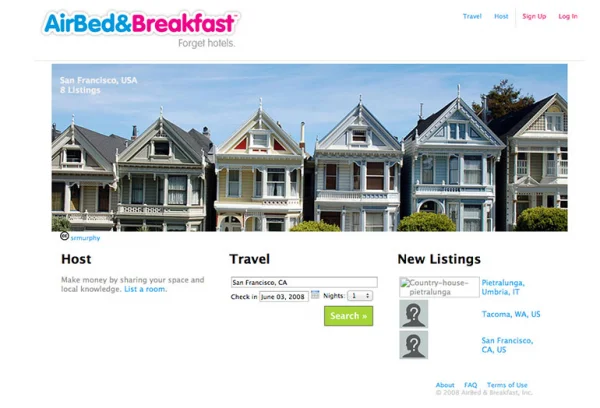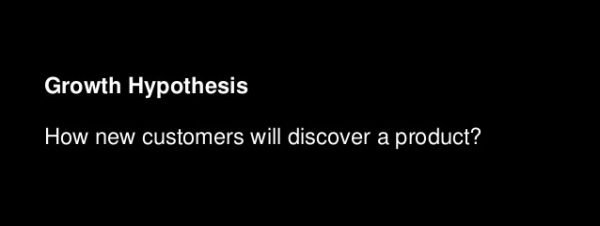4 minutes read
How to Validate your “Leap of Faith” AssumptionsTable of Contents
Eric Ries, in his famous book Lean Startup defines startup as:
“A human institution designed to create new products and services under conditions of extreme uncertainty.”
In the lean startup community, the term “Leap of Faith” is used to describe the riskiest assumptions we are making about our idea.
Leap of faith has two kinds of assumptions — Value and Growth Hypothesis. It is crucial to understand and validate both before moving ahead with execution.
Value Hypothesis

How do you validate your assumptions about the value of your product? Well, it depends but generally the best way is to create a quick prototype and reach out to your customers. Again, prototype may not necessarily mean the small part of your actual product. It may not have any element of actual product at all. Let’s check some examples.
How Dropbox did it?
Dropbox’s co-founder created a video explaining the product without actually making it. The video got viral and brought 75,000 registration overnight instantly proving the value hypothesis.
How Airbnb did it?
In 2007, designers Brian Chesky and Joe Gebbia couldn’t afford the rent of their San Francisco apartment. To make ends meet, they decided to turn their loft into a lodging space, but they didn’t want to post it on Craigslist as it was too impersonal.
During the same period, there was a design conference coming to town and hotel space was limited, so they set up a simple website with pictures of their their loft-turned-lodging space with three air mattresses on the floor. They also promised a home-cooked breakfast in the morning.
This site got them their first three customers each one paying $80. After that first weekend they began receiving emails from people around the world asking when the site would be available for destinations like Buenos Aires, London, and Japan. Again proving the value hypothesis with minimal efforts in short time.
Following is not the prototype but an early version of website. You get the idea how awful the prototype must be!

How Zomato did it?
The idea to build Zomato was germinated in the food court of Bain & Co’s New Delhi office. Deepinder Goyal saw people waiting for long hours in the food court to get a glance of the menu card. To solve this problem they launched ‘Foodiebay’. They scanned copies of the menu and uploaded it on the company’s private network. Soon the employees started using the facility, thus saving their time and in turn bringing traffic to the website. This proved the value of the idea and after this small experience they made this website public and roped in more cafes and restaurants.
This is how the Foodiebay site looked then:

Once the Value Hypothesis is established you come to what is called a Growth Hypothesis.
Growth Hypothesis

You should focus on growth only after you’ve established the value of your idea/product.
Ask yourself, “How users will find your product?”.
And the best way for your users to find your product is hear it from their friends, especially in case of a consumer product.
How Facebook did it?
Facebook is an excellent example of such growth hypothesis. It grew rapidly in Harvard and in less than a year, they had 1 million users. People kept talking about it and kept referring to their friends.
How Whatsapp did it?
Another example is WhatsApp. The initial few thousand users came through co-founder Jan Koum’s friends and ex-colleagues at Yahoo. The founders also asked their friends to spread the word and hence included friends of friends. And they were lucky to get discovered by a newly opened iOS store in 2009. Because of its utility, Whatsapp remained one of top apps most of the time.
At the same time, Apple released the push notifications feature. Koum discovered that people responded more when they got notified about the replies of their messages. Koum released WhatsApp 2.0 with a messaging functionality and its users base spiked to 250,000. Another reason for Whatsapp’s rapid growth was, Koum and Acton’s mutual intolerance for nonsense. There was always a note on Acton’s desk that read, “No Ads! No Games! No Gimmicks!”

This approach proved incredibly effective. With no marketing, the company has received impressive viral growth thanks to a product that truly resonates with users and essentially markets itself.
Whatsapp and Facebook proved their growth hypothesis mostly through word of mouth, viral social features and luck!
How Instagram did it?
Another interesting and rapid growth story is Instagram. How did customer discover instagram in a highly competitive photo sharing app market?
On launch day, Twitter founder Jack Dorsey tweeted about Instagram to his million+ followers. Within days, the app was featured as the app of the day on App Store. Well, it seems you need to have good friends (and of course a great product)!
You never know what will click for your product’s growth until you find ways to reach out to your customers. Let me end this article by quoting Eric Ries once again:
these leap of faith assumptions are the real power of entrepreneurs because entire venture depends on it. If they are true, the great opportunity awaits. If they are false, the start-up/business risks total failure. — Eric Ries.
Nachiket Patel
Co-Founder, VP (DIGICORP)
Nachiket Patel
- Posted on July 6, 2017


